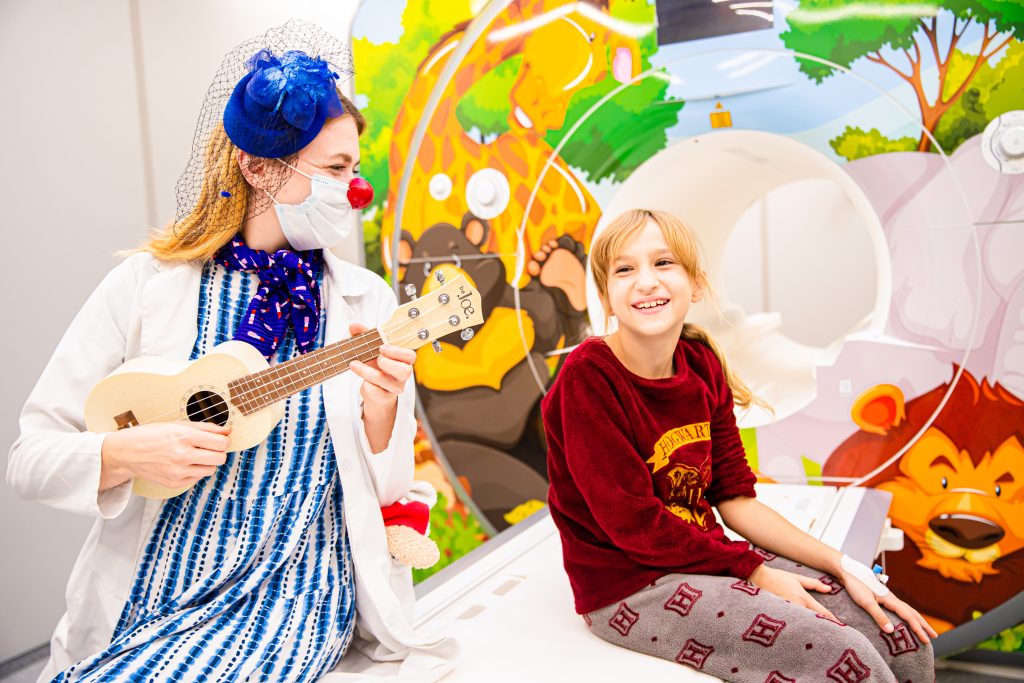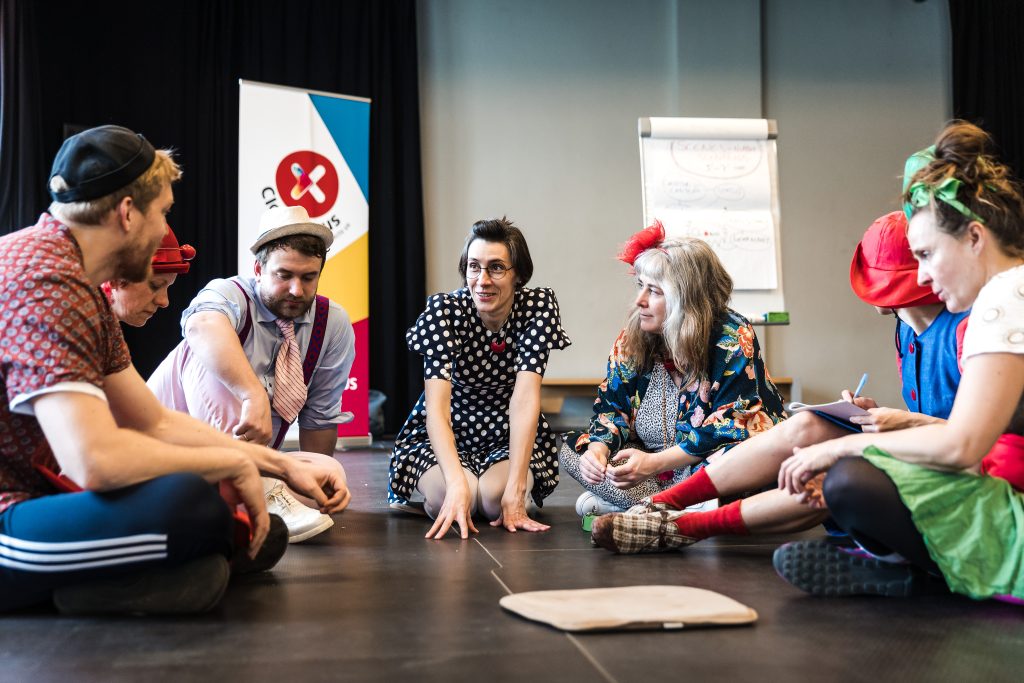© Alicja Rzepa

“The clown has the power to change things, to change the atmosphere. Through their power of the true encounter, the clown can amaze a nurse, astonish a doctor, put parents in awe, surprise children, teachers, therapists, parents and themselves!
The clown can open doors and access deeper layers of the human psyche. Using humour, kindness and full acceptance of the person in front of them, the Clown can communicate with all human beings in an absolutely innocent, non-judgmental way, regardless of gender, age, ethnicity, sexual orientation, economic or educational background.”
Christophe Dumalin, Chief Artistic Director RED NOSES International Healthcare clowning is the art of using clowning techniques in health and care settings to improve the well-being of people facing vulnerable situations and foster more supportive environments.
It involves trained clowns who connect with people in a non-judgmental, humorous, and compassionate way, regardless of their backgrounds.
This practice has a rich history, dating back to 1986 when Michael Christensen founded the Big Apple Circus Clown Care after his brother’s cancer diagnosis. Since then, healthcare clowns have become integral in various healthcare environments.
Healthcare clowns focus on strengths, not weaknesses, recognising and empowering individuals rather than reducing them to their condition or situation.
They connect with people through the relatable and resilient figure of the clown, who turns setbacks into personal triumphs. These encounters foster deep connections, often encouraging people to share their worries and stories.
This demands great sensitivity and know-how from the clown artists.
© Saulius Aliukonis

Aimed at professional artists with experience in art forms such as acting, clowning, circus art, puppetry, music, dance, acrobatics etc., a healthcare clowning education typically includes artistic training, specialised knowledge in healthcare settings, clinical exposure, psychology, sociology, and cultural sensitivity. This equips them to navigate hospital, care and humanitarian environments, understand health conditions, and effectively use humour and creativity as powerful tools for communication.
Do you want to find out if there is a healthcare clowning organisation in your country? Have a look at:
European Federation of Healthcare Clown Organizations (EFHCO) LinkedIn page:
RED NOSES International Curriculum:
Health Care Clowns Pathways (HCCP):
Have a look at these video portraits of clown artists of the ClownNexus project: